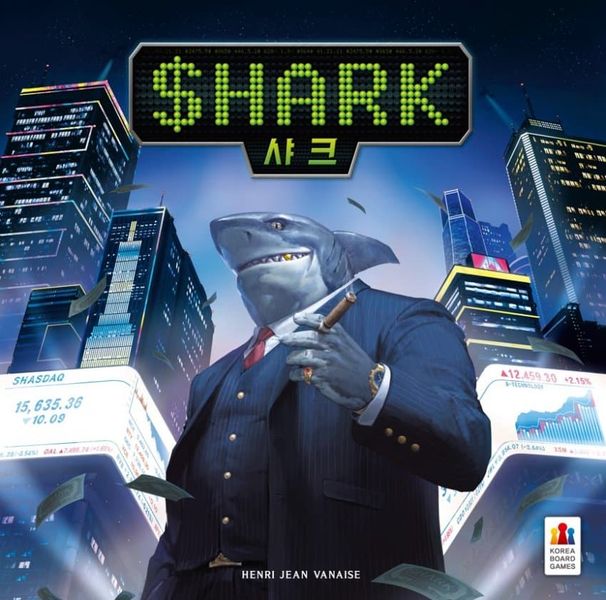Shark (1987) Board Game
Shark is an economic board game released in 1987 by designer H. Jean Vanaise and published by BGA Plus. The game is designed for 2-6 players, with an optimal player count of
Game Components of Shark
How To Setup Shark
To set up Shark, each player starts by selecting a stock from one of the four available companies. None of the companies are inherently stronger or weaker, but the initial choice can affect the game’s dynamics. Players then place their initial stocks on the price tracker board. The game board is divided into quadrants where players will place building tokens representing different companies. Each player’s main goal is to manage their stocks and place buildings strategically to increase their company’s valuation.
Gameplay Mechanics and Game Objective
– Buy or sell up to 5 shares in any company before or after the main action.
– Roll company and quadrant dice to determine where to place a building token.
– Placing a building rewards players with cash and increases the stock price of the company.
– Hostile takeovers can occur when one company’s chain surpasses another, leading to significant stock price changes and player dividends or losses.
Player Experience
Shark is a game that thrives on its chaotic and unpredictable nature, making it appealing to players who enjoy gambling and making big, assertive moves. The game is fast-paced and tense, with dice rolls introducing a significant element of luck. Players must adapt quickly to changing market conditions and company growth to succeed. While the game can be exciting, especially in moments of aggressive takeovers and sudden changes in fortune, it also includes turns where little happens, which can be less compelling.
Pros
Cons
Personal Thoughts on Shark
Shark is a game for players who enjoy a mix of strategy and luck, particularly those who relish in the excitement of making bold, risk-taking moves. It’s not a game for the timid, as safe play can lead to a lukewarm experience. While it may not be the height of strategic complexity, Shark offers a fun and chaotic experience for those willing to accept its quirks and random elements. If you’re looking for a game that simulates the cutthroat world of corporate takeovers with a dash of unpredictability, Shark might be the perfect fit.
We are supported by our audience. When you purchase through links on our site, we may earn an affiliate commission, at no extra cost for you. Learn more.

